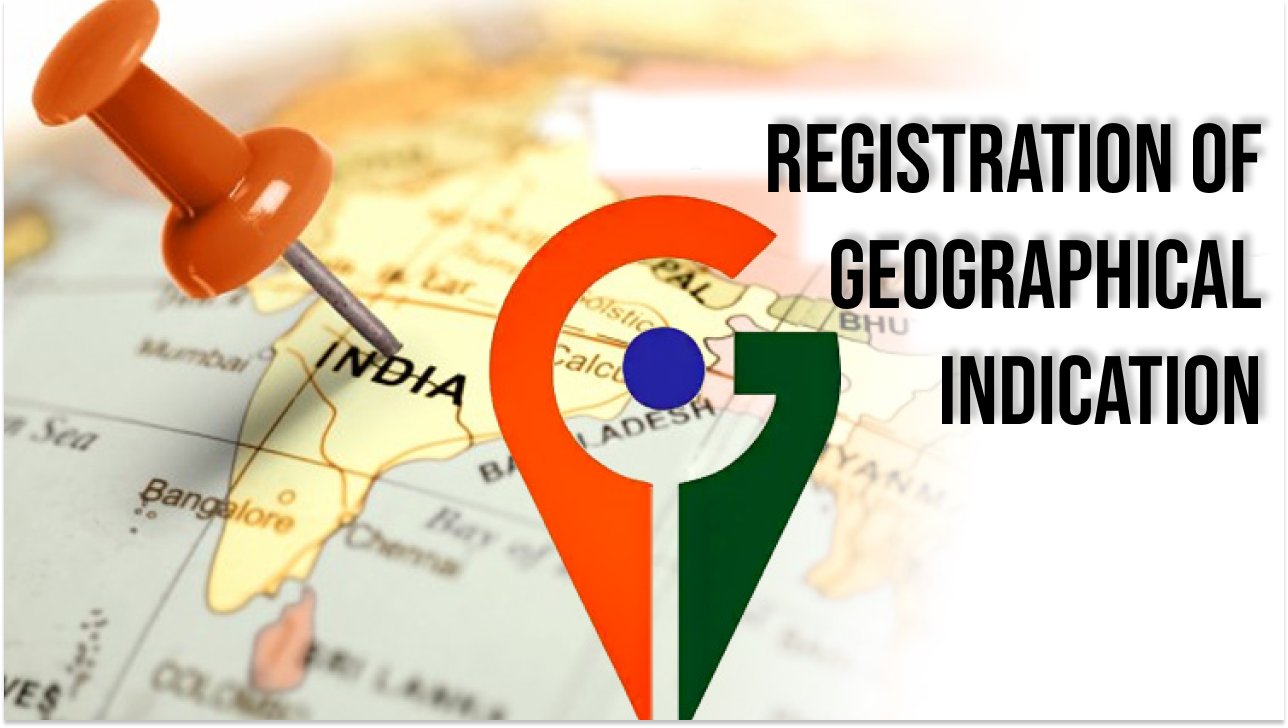Registration of Geographical Indication
This article examines the evolution and significance of Geographical Indications (GIs) in India, tracing their emergence from obscurity to a pivotal role in international trade discussions post-TRIPS Agreement. Focusing on the Geographical Indications of Goods Act, it delineates the comprehensive registration process, including rights, scrutiny steps, and potential remedies for infringement. The registration journey unfolds through filing, scrutiny, examination, opposition, corrections, and ultimate registration, providing insights into the responsibilities of registered proprietors, authorized users, and producers. The article underscores the optional yet protective nature of registration, emphasizing its role in preventing infringement and promoting legal safeguards.

Geographical Indication in India
Geographical Indications (GIs) weren't even a mainstream topic thirty years ago. There was little academic research on the subject, especially in English-speaking countries. Then, following the passage of the TRIPS Agreement, the function of GIs began to take centre stage at the multilateral level as well as in discussions around free trade agreements and state policy. This resulted in a growing body of scholarship that featured authors from the global South as well as other nations and Europe, the region from which GIs hail. The legal treatment of GIs has been a central topic of policy talks on economic and social development on a national and worldwide level during the past 10 years as awareness of GIs has increased. Today, the field draws eminent academics from all fields and continents. Briefly stated, GIs are now a significant subject of intellectual property law.
Registration of Geographical Indication
Section 12 of the Geographical Indications of Goods Act lays down the rights conferred by registration. Firstly, it gives an exclusive right to make use of the geographical indication concerning the good. Secondly, in case of an infringement, a remedy can resort to this Act. These rights are not absolute; they are subject to certain conditions such as variation, blank space, limitation and restraining.
The following are the steps involved in the registration
- Filing of the Application
- Preliminary Scrutiny
- Examination
- Issue of Show Cause Notice
- Advertisement
- Opposition to Registration
- Corrections and amendments
- Registration
- Duration, Renewal and Restoration
- Appeal to the Intellectual Property Appellate Boards
To elaborate on these procedures, step one concerns the application's submission. The registration application must be submitted in three copies. It should be signed by the applicant, and the statement of the case should follow. Additionally, an affidavit declaring the interest in the good is required. Section 11 of the application provides an explanation of its contents (2). The specifics comprise the origin of the good, its category, a map of the area where the good is located, and finally the applicant's information. The Geographical Indications Registry's website contains the registration form. Section 11(5) to 15 refers to the second and third steps of the preliminary scrutiny and examination, respectively (7). The application is carefully examined by the examiner to look for mistakes or misleading information.
If there are any such mistakes, the applicant has one month to check it and correct it. The Registrar consults with an expert panel of at least seven members to determine the validity of the application. The Registrar reviews the application and raises objections in the fourth step, which is the issuance of the show-cause notice described in Section 12. If the petitioner believes these arguments are unjustified, they may appeal. The geographical indication that has been accepted is published in the Geographical Indications Journal, according to Section 13, which is an advertisement. The sixth phase, "Opposition to the registration," falls under Section 14. Three months after it is published in the Geographical Indications Journal, the opposition must be submitted. The applicant can also receive a copy of this opposition. This is a directive to present any counterclaims the applicant may have as support. The Registrar will allot sufficient time for each party to present their case.
The Registrar permits the applicant to amend any inaccuracies that are contained in counterclaims and in an answer to the opposition. The Registrar's approval of repairs and revisions under Section 15 is the seventh step. The registration process outlined in Section 16 is the crucial step. After accepting the application, the Registrar registers the GI. In accordance with Rule 55 of the Geographical Indications of Goods (Registration and Protection) Rules, 2002, the Registrar shall provide the authorised user with a certificate in Form-2 bearing the seal of the GI's register. The length, renewal, and restoration are described in Section 18. The appeal to the Appellate Boards comes last. According to this, anyone who feels wronged may seek redress through the Intellectual Property Appellate Board (IPAB).
Understanding a registered proprietor's, authorised user's, and producer's responsibilities with regard to a geographical indication is crucial. First off, any producer, organisation, group, or authority that is legally recognised as a registered proprietor can be a registered proprietor. Their names should be accurately included in the Geographical Indications Register. Second, a legitimate user is just the one who created the good. He or she should submit an application for registration and pay the required price. Finally, a producer may specialise in producing industrial, natural, or agricultural items.
The registration procedure is optional. In the event of a violation, registration promotes infringement and provides legal protection. In cases of infringement, only a registered proprietor and authorised users may file a lawsuit. The sole authority to utilise the geographical indicator belongs to the authorised user. The following situations constitute infringement of a geographical indicator. First, when an authorised user uses the indicator in a way that deceives the general public about the source of the product. When it results in unethical behaviour or competition. Using the GI tag as a deceptive representation in the public domain is the final example.












